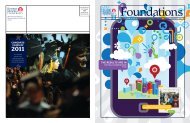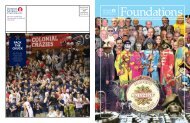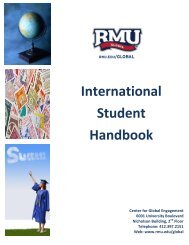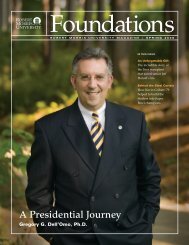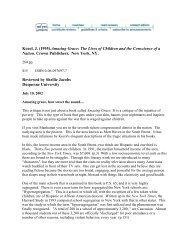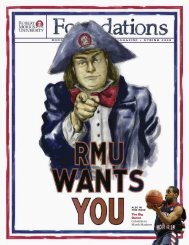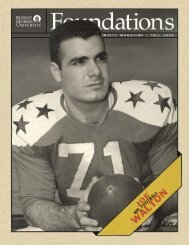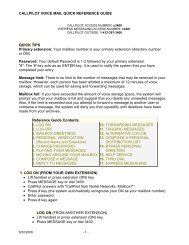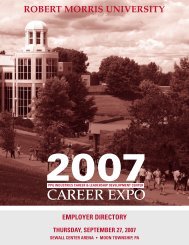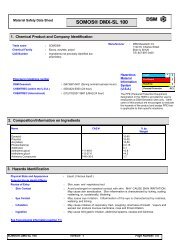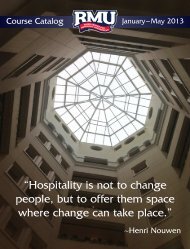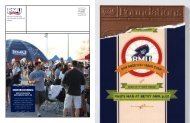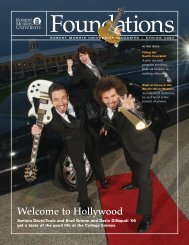Eat Their Dust! - Robert Morris University
Eat Their Dust! - Robert Morris University
Eat Their Dust! - Robert Morris University
- No tags were found...
Create successful ePaper yourself
Turn your PDF publications into a flip-book with our unique Google optimized e-Paper software.
engineering majors to practice engineering techniques,solve real-world problems, motivate other students towant to participate in the engineering department, andraise national and local awareness of the <strong>University</strong>.Hendrickson and Erevelles discovered the Baja SAEchallenge while searching online for national engineeringcompetitions. A hands-on project that attracted nationalattention, it seemed like a good fit. “We wantedsomething that would enable our students to exercisetheir engineering skills while getting their hands dirty,”says Erevelles. “Obviously, this was the perfect projectfor that.”The engineering team approached the project in fourphases: research, design/integration, building andtesting/racing, with the first step being the completionof a cost and design report.By fall of 2006, expecting to race the car in the spring,the team spent numerous hours working on the vehicle,gathering information and building a prototype frameusing 3-D modeling software. However, by Decemberthey had significant setbacks. They had no sponsors, nobudget, and they also had deferred some key decisionsthat were now coming due. By the time they went toregister for the event, the race was already full.Reluctantly, they had to postpone the project foranother year.“We put it off for a year to go back and revisit some ofthe design decisions that were initially made,” saysHendrickson. “We had to decide whether we weregoing for 4-wheel drive or 2-wheel drive, what typeof transmission it was going to have, and so on.”The team didn’t let this setback discourage them,however, and they knew that they couldn't let asemester go to waste. By the spring of 2007 theywere diligently working on a PVC prototype,which would give them a better idea of how theywere going to design the car and would alsohelp to recruit new team members during the freshmantours. An added advantage of the PVC constructionwas affordability – the model could be built forunder $100.As the freshman class began arriving that fall, newstudents became interested and started to participatein the project. Cox, Hatok and Lutty rose to thetop. “Of all the students initially considered for theproject,” says Hendrickson, “Jeff, Craig and Adam werethe most interested. Jeff, especially, really wanted totake a leadership position. So, as my senior semesterwound down, Jeff assumed the role of project manager,although I stayed very active in the project.”By spring of 2008, Lutty had been heading up thechassis design modifications. “This was without adoubt the largest part of the project,” says Hendrickson.“Without having a solid frame design, components maynot attach correctly or break during racing.”Facilitated by Manohar, the team went to TriArc, aBlawnox, Pa., company that manufactures steel rollingladders, where an RMU Engineering alumnus, TimResciniti ’02, spent several hours helping them bendthe pipe for the vehicle chassis. Manohar and Yarmeaktrained the Baja team members on how to use thewelding equipment and different welding techniques.The team also looked at competitors’ cars that did welland modeled theirs off of those. They went throughfour revisions of their original model before theycame up with a final design. “The Baja rulebook is verystrict,” says Lutty. “Every time a new part came in, I’dhave to change something in the design to make surewe met the guidelines.”R O B E R T M O R R I S U N I V E R S I T Y F O U N D A T I O N S • 1 7



